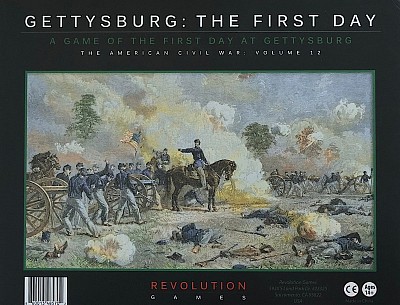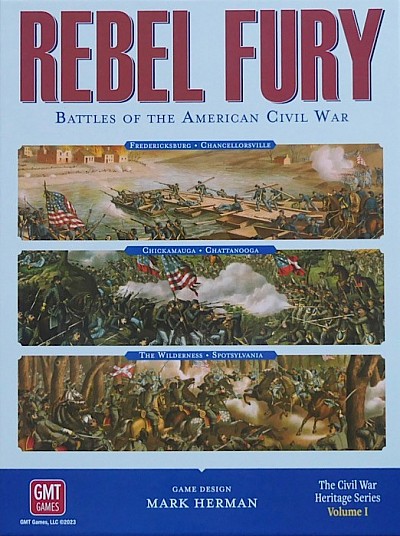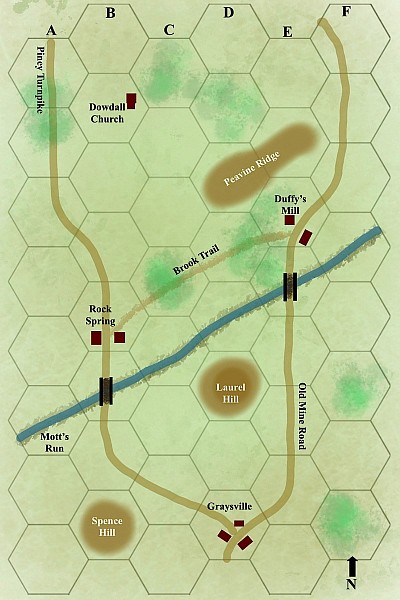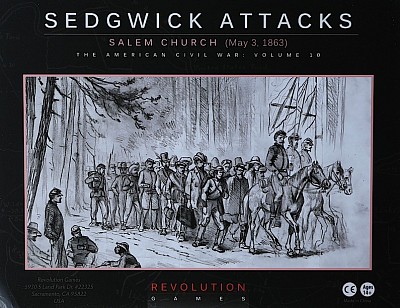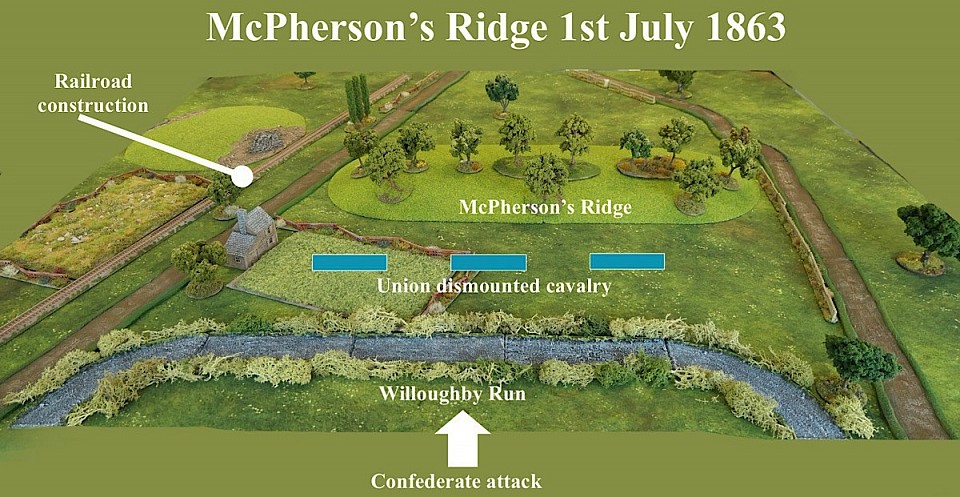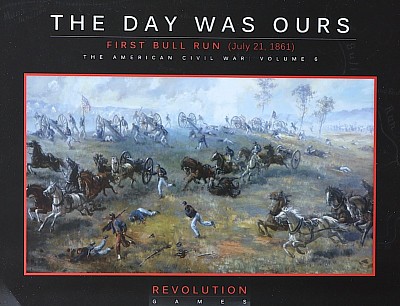American Civil War
Blind Swords series
The Blind Swords series was originally designed by Hermann Luttmann and published by Revolution Games. The product has now been split into a set of series rules and a playbook for each volume, and other designers have come on board, allowing the series to have now reached volume 12.
Vol 12 covers the first day at Gettysburg. Units are regiments and grouped within brigades. A chit draw system activates the brigades, bringing a natural chaos as the order of activation is most uncertain and there are also event chits placed into the chit draw that shake things up a bit.
I wanted this volume particularly for the opening hours of the battle, which is the part of the battle that interests me the most, with Heth probing the Chambersburg Pike and attacking across Willoughby's Run, pressing Buford's dismounted cavalry, who are desperate for support.
I am hoping that this will become the series that I rely upon for my ACW boardgaming.
I have been here before, having owned volumes I - IV, but each game had a single rulebook and the differences brought to each volume to model the batle, to my mind, became a bit difficult to track. By splitting the rules, so that the series part stays standard and any new rules and scenarios are placed into a playbook makes things much better in that regard.
First game - Chickamauga
We played our first face-to-face game of Rebel Fury last night (Chickamauga) and both enjoyed the playing experience very much. I have not followed the Q&A over at BoardGamegeek and found that the rule book answered everything that I wanted to know - so errat free rules, who would have thought!
I particularly liked that the rules follow the sequence of play, so for starting out as a newbie, it is very easy to follow what needs to be done next, just by working through the rules along with the sequence of play.
We really liked the ‘approach to battle’ aspect of the game. This is primarily a game of manoeuvre, with a need for one to manoeuvre better than the other.
It seems that the player that has achieved a few key positions is best to then pass to try and close down the enemy manoeuvre opportunity - as long as you have moved to do some key things you wanted to do, then that is fine. It also seems an important tactic to advance into contact in some places quite early, so locking down enemy units.
The combat is of course brutal ……. often for the attacker :-) but we started to find ways and places of trying to get as many advantages as possible before attacking and especially to avoid attacking in those places that looked risky to the attacker.
I didn’t see water crossing costs in time as an issue, they are important terrain features and in the time frame / scale that we are playing, this is a full division trying to do something in half a day. I also thought the brutal combat was realistic (harsh but realistic) as again representing half a day of action, my limited knowledge of the period is that formations would basically attack until they burned out and that very often could be measured in around 3 - 4 hours or so of sustained fighting - so frustrating but realistic.
Overall, our experience will have us coming back to the system, hopefully repeatedly. We need to get better at what we did, for example we both used artillery at the same rate, until it ran out and we need to think about that a bit more and we probably made more attacks than we should have without maximising our positions first. We should also have given a bit more thought to developing manoeuvre and attacks against the enemy flanks, rather than trying to break the centre.
Definitely a ‘thinking’ game that fully involves the two players throughout. I think there is an art to knowing when to pass for best effect on the enemy and also to know when a unit is likely to be already disadvantaged in combat and perhaps save your artillery rather than waste ammo on that that particular situation.
For the record, the CSA could have won on casualty points - 12 points to zero, but in any case they won on the strategic objective by pressurising the Union line to fall back so that a lower lateral route (costing few hexes to traverse) from entry hex to city could be gained.
A campaign game
In the menu on the left, there is a tab called 'Grayville Campaign 1863. This will detail the progress of a home brew ficticious campaign that I will be working through using my Epic ACW figures on a table that will be 4' x 4' or smaller and my own rules.
The inspiration for the game comes from the Charles Grant book 'Programmed Wargame Scenarios', which has a chapter on campaigns, covering two different campaign styles.
This is using the gridded version and will be an action that will likely cover around three days of fighting, with each day being split into Morning, Early Afternoon and Late Afternoon campaign turns.
Each side is represented by a division with the Union having a numerical advantage of 3:2, though initially the Confederate forces are dispersed so some early contacts will have higher combat ratios than that.
I will be using some of the 'programmed' instructions from the book for Confederate dispositions and responses and since these are driven by die rolls, the whole thing should remain quite fresh considering I have planned it all out and I am hoping that after afirst playing, some refinement will allow the campaign some re-playability.
Below
This is the table that I used for a recent figure game for the opening hours of the Gettysburg campaign. In the scenario, the Confederates attack across Willoughby's Run to unseat Buford's dismounted cavalry.
The Union's Iron Brigade are double marching to support Buford, resulting in both sides running up the opposing slopes of McPherson's Ridge, to clash amongst the light woods.
Salem Church 1863
The Series rules (Blind Swords) are by Hermann Luttmann and this module has been designed by Claude Whalen and published by Revolution Games.
It covers part of the fighting during the Battle of Chancellorsville on 3rd May, that happened near salem Church.
I am advised that this is a good module to start the series with as it doesn't have as many 'things' going on as other titles.
First Bull Run
The Series (Blind Swords) is designed by Hermann Luttmann and this module (volume 6) is designed by Matt Ward and published by Revolution Games.
The game covers the fighting on the first day (July 21st, 1861) of the Battle of the First Bull Run.
There are three scenarios: the initial clash at Matthews Hill and the battle for Henry House Hill. The third scenario covers the entire battle.
I bought this mostly for nostalgia reasons, as some decades ago, when I first met fellow board gamer Mike, we had many a good gaming session with the Avalon Hill production of Bull Run, (also known as the Battle of First Manassas). Can this do more of the same!
